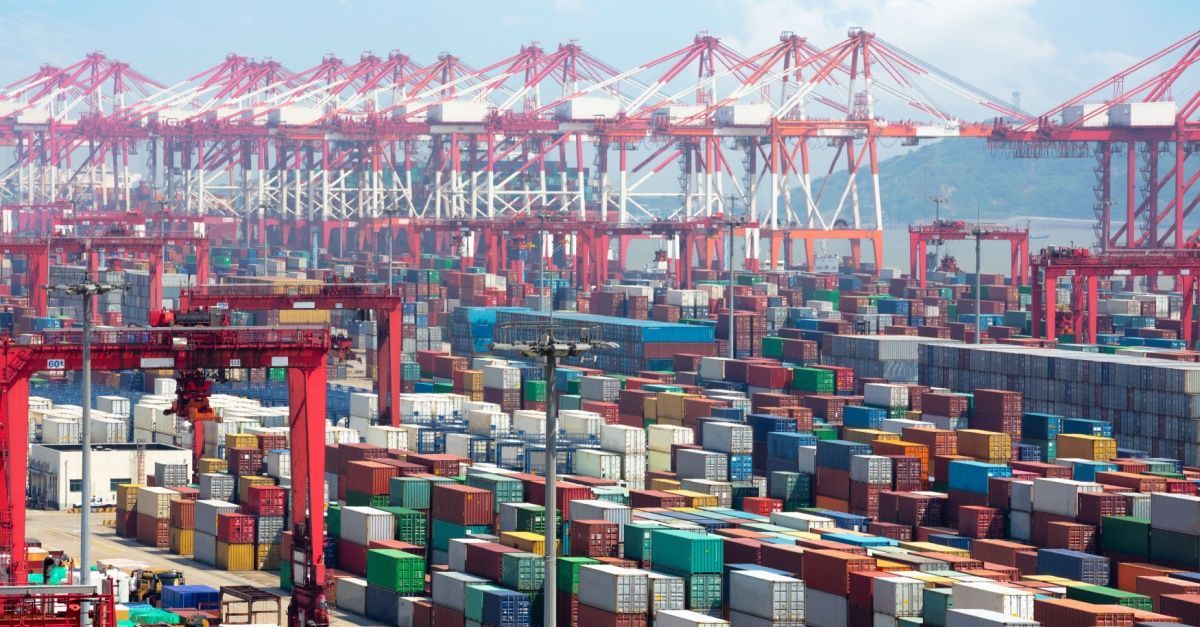Broker Pushback, LTL Delays, and Drayage in Distress
Blog Post CTA
The freight economy is feeling the strain from all sides — brokerage, drayage, warehousing, and truckload rates are all showing signs of stress. At the policy level, freight brokers are pushing back against proposed rate transparency rules, warning that mandatory disclosures could destabilize their business models.
FedEx Freight is delaying a major reclassification of LTL shipments. The shift to density-based pricing was set to impact thousands of customers. The delay gives shippers more time to adjust to the classification changes. Drayage firms face rising costs, stricter regulations, and mounting competition from digital brokers. Smaller operators are especially vulnerable in this high-pressure environment.
Across logistics and manufacturing, more than 4,000 jobs were cut this month — another sign of economic weakness. At the same time, truckers are urging Congress to fund one of their most basic needs: more safe parking options. Truckload markets remain in limbo. Overcapacity persists,
spot rates are stagnant, and warehouse investors are pulling back amid market uncertainty.
The bottom line is that the freight market is uncertain, uneven, and under pressure.
TIA Opposes Broker Transparency Mandate
The Transportation Intermediaries Association (TIA) is opposing a proposed rule by the Federal Motor Carrier Safety Administration (FMCSA) that would compel brokers to disclose shipper rates to carriers. TIA CEO Chris Burroughs has warned that such a move could dismantle competitive logistics pricing and devastate smaller brokers, 75% of which earn under $15 million annually.
The effort was reignited by testimony from the Owner-Operator Independent Drivers Association (OOIDA), citing fraud and nonpayment as systemic issues fueled by opaque rate structures. The FMCSA proposal would require electronic records and a 48-hour carrier response window; however, TIA contends that existing tools, such as load boards and rate benchmarks, already offer sufficient transparency.
FedEx Freight Postpones LTL Reclassification
FedEx Freight is delaying the implementation of major revisions to the National Motor Freight Classification (NMFC), which shifts more than 2,000 commodities to density-based pricing models, by 150 days. Although the changes technically took effect July 19, FedEx won’t begin applying the new classifications until December 1, giving shippers time to adjust their pricing systems and processes.
The company, responsible for nearly
15% of all U.S. less-than-truckload (LTL) shipments, handles approximately 99,000 shipments daily and reported $9.1 billion in revenue last year. The reclassification will disproportionately affect shippers of low-density goods — items such as foam, cabinets, and chairs that occupy a large amount of trailer space relative to their weight.
In contrast, dense items like bricks or fasteners may benefit from reduced rates. While overall LTL volumes are down, Old Dominion and XPO reported year-over-year shipment drops of 6.8% and 5%, respectively. LTL pricing remains high. The long-distance LTL producer price index was up 7.8% in June.
The NMFTA continues to review nearly 20,000 commodity codes, suggesting more changes are ahead. FedEx warned that after December, inaccurate or incomplete shipment data may trigger inspection surcharges, further incentivizing shippers to ensure their freight specifications are accurate.
Drayage Sector Struggles with Price Wars, Regulatory Strain
It is a “race to the bottom” for drayage companies. Traditional drayage operators are being squeezed by rising operational costs, tech-enabled competition, and increasingly stringent environmental regulations, especially in California. Industry leaders describe an unsustainable pricing race in which even a $50 bid difference can mean lost business.
Companies like GSC Enterprises have shuttered, while others warn of a wave of buyouts targeting small operators with fewer than 50 trucks. The post-COVID influx of capacity and the rise of asset-light brokers are further pressuring margins.
California's clean-air mandates and indirect source rules are compounding the challenges and accelerating consolidation.
“This race to the bottom has to end,” said Matt Schrap of the Harbor Trucking Association.
Layoffs Sweep Through Logistics, Distribution, Manufacturing
Beverage distributor Republic National Distributing Co. is exiting California, laying off 1,756 workers. Ohio Eagle Distributing and Americold Logistics are cutting 124 and 110 jobs, respectively.
Transloading provider MacMillan-Piper and grocery supplier GSC Enterprises cited sudden financial distress in WARN notices tied to 172 combined layoffs. In lumber, Canfor and Weaber are shuttering mills, attributing closures to weak markets and inflation. Food manufacturers like Pocino Foods and T. Marzetti are also closing facilities.
The breadth and diversity of layoffs underline systemic weakness across multiple supply chain nodes.
Trucking Groups Call for $755M to Fix Parking Shortage
The ATA and OOIDA are urging Congress to commit $755 million over five years to address a chronic shortage of truck parking, a leading safety concern among drivers. With just one legal spot available for every 11 trucks, the issue forces drivers into dangerous or noncompliant rest scenarios.
The call comes as lawmakers prepare the next Surface Transportation Reauthorization Act. While some federal funding has already been allocated, including
$180 million in Florida and $24.8 million in West Virginia, advocates argue that a larger, sustained program is essential. The initiative is framed as both a safety imperative and a support system for driver retention and regulatory compliance.
Truckload Rates Stagnate as LTL Holds Firm
Freight markets remain divided, with truckload (TL) rates languishing under persistent overcapacity, while LTL carriers maintain pricing discipline. According to the TD Cowen/AFS Freight Index, TL rates are projected to decline for a 10th straight quarter, down 0.4% from Q2 and hovering just 5.6% above 2018 levels.
AFS CEO Andy Dyer cited global trade policy uncertainty and economic hesitation as reasons shippers are delaying spending, dampening demand, and stifling rate recovery. The TL market's overcapacity stems from a COVID-era influx of small carriers, many of which remain despite low freight volumes and mounting financial pressure.
Aaron LaGanke, VP of Freight Services at AFS, noted that most of the market exits have involved smaller firms and haven’t significantly reduced total capacity. Without a notable contraction or surge in demand, the imbalance is expected to persist. Meanwhile,
LTL carriers are performing better, leveraging a strategy of targeted, profitable freight.
The LTL Freight Index shows a 1% year-over-year rise, supported by a 2.9% drop in cost per shipment and a 5.1% reduction in shipment weight. Carriers are benefiting from the new NMFC density-based classification, which enhances pricing control, although its full impact remains to be seen.
Trade Uncertainty, Surging Vacancies Freeze Warehouse Investment
U.S. warehouse deals stalled in Q2 2025, with industrial real estate investment flattening at $22.87 billion, following two strong quarters. Uncertainty surrounding new tariffs under the Trump administration is paralyzing investor decisions, while warehousing faces rising vacancies and muted tenant demand.
The national vacancy rate reached 7.1%, its highest level since 2014, amid a surge in post-pandemic construction. Leasing timelines have lengthened from six months to as long as 18 months, further complicating the underwriting process. New warehouse completions are down 47% year over year, and average asking rents, though still above pre-pandemic levels, have plateaued at $10.06 per square foot.
Experience Seamless Shipping with Entourage Freight Solutions
Entourage Freight Solutions believes in total transparency in the shipping process. That is why we invest in tech solutions that track every shipment extensively, monitor every driver, and extract every bit of efficiency without sacrificing quality.
Our state-of-the-art platform utilizes cloud-based GPS tracking to keep you informed, reroutes shipments on the fly to avoid delays, and even responds to real-time market changes to ensure you receive your shipment on time and as soon as possible.
Our Services
- Full Truckload (FTL): When you need a truck all to yourself.
- Less-Than-Truckload (LTL): Efficient solutions for multi-stop shipments or combining smaller loads to save on costs.
- Refrigerated Trucking: Keeping your temperature-sensitive products fresh and safe.
- Cross-Docking: Strategically located facilities in Shelby, Ohio, Cedar Rapids, Iowa, and Romulus, Michigan, for streamlined consolidation, storage, and distribution.
Ready to experience a new level of service and control in your freight shipping? Request a quote today to see how Entourage Freight Solutions can help with your freight movement and other supply chain needs.









